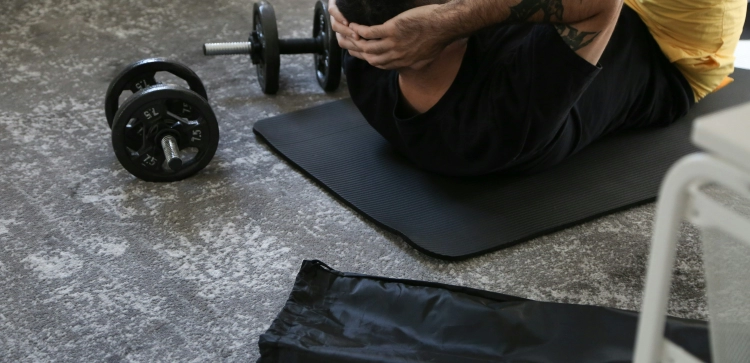The Impact Of Height In Bouldering: Advantages And Disadvantages Explored

Bouldering, the exhilarating sport of scaling rock formations without ropes, requires strength, technique, and agility. However, there's one factor that often comes into play but is seldom discussed: height advantage. In this article, we'll delve into the advantages and disadvantages of both tall and short climbers in bouldering. Whether you're a seasoned climber or simply curious about the sport, understanding the impact of height can shed light on the diverse strategies and challenges climbers face.
- Does Height Really Matter In Bouldering?
- The Advantages Of Tall Climbers:
- The Disadvantages Of Tall Climbers:
- The Advantages Of Short Climbers:
- The Disadvantages Of Short Climbers:
- Frequently Asked Questions:
- Are Tall Climbers Always At An Advantage In Bouldering?
- Can Short Climbers Compete With Tall Climbers On Equal Footing?
- Conclusion:
Does Height Really Matter in Bouldering?
When it comes to bouldering, height advantage can undeniably influence climbing performance. Tall climbers, with their extended reach, often have a natural advantage in reaching holds that may be out of reach for shorter climbers. Their longer limbs allow them to navigate certain routes more easily, particularly those that require long reaches or spans between holds.
The Advantages of Tall Climbers:
-
Extended Reach for Difficult Holds: The longer limbs of tall climbers make it easier for them to reach holds that may seem out of reach for others. This advantage comes into play when tackling routes with large gaps between holds or when attempting dynamic movements that require an extended reach.
-
Better Leverage for Dynamic Movements: Tall climbers can utilize their height to generate more momentum and power in dynamic movements. This advantage becomes particularly beneficial when executing dynamic jumps or swings between holds, where the ability to generate a greater force can help propel the climber to the next hold.
-
Efficient Weight Distribution: Tall climbers often have a higher center of gravity, allowing them to more effectively distribute their weight on the wall. This advantage can aid in maintaining balance and stability, especially when navigating challenging routes with precarious holds.
-
Ability to Span Wider Gaps: The increased wingspan of tall climbers enables them to bridge wider gaps between holds. This ability comes in handy when encountering routes with wide-spaced holds or sloping features where a longer reach can provide a better grip or stabilization.
The Disadvantages of Tall Climbers:
-
Challenges with Compression Climbing: Compression climbing, which involves squeezing or pinching holds close together, can prove more difficult for tall climbers due to their longer limbs. Negotiating routes that require intricate body positioning and fitting into tight spaces may present challenges, as their extended reach can sometimes hinder effective weight distribution and body control.
-
Height-Dependent Routes: While tall climbers have advantages on certain routes, there are instances where their height becomes a disadvantage. Routes that feature low ceilings or require climbers to fit into narrow spaces can pose challenges for tall individuals, as their height may restrict their movements or limit their ability to navigate these confined areas effectively.
The Advantages of Short Climbers:
-
Compact and Controlled Movements: Short climbers often excel in situations that require precise footwork and intricate movements. With a lower center of gravity, they can maintain stability on smaller footholds and execute intricate sequences with better control.
-
Strong Grip Strength: Short climbers tend to have a proportionally stronger grip strength, which can be advantageous when gripping smaller holds or engaging in crimps and pinches. Their ability to generate significant force with a tighter grip allows them to tackle routes that demand superior finger strength.
-
Height as a Mental Advantage: While being short may present physical challenges, it can also serve as a mental advantage. Short climbers often develop creative and adaptive climbing techniques, finding alternative solutions to overcome reach limitations. Their ability to problem-solve and think outside the box adds an element of resourcefulness to their climbing style.
The Disadvantages of Short Climbers:
-
Limited Reach for Certain Holds: Short climbers may face challenges when it comes to reaching holds that are designed for climbers with longer limbs. Routes with widely spaced holds or dynamic movements requiring a significant reach may pose greater difficulties for shorter individuals. It may require more creativity and precise footwork to find alternative solutions or workarounds for these situations.
-
Struggles with High-Reach Moves: Climbing routes that feature high-reach moves, such as large dynos or long reaches between holds, can be particularly demanding for short climbers. The lack of height may limit their ability to generate enough momentum or achieve a secure grip, making it necessary to develop specialized techniques and strategies to overcome these obstacles.
Frequently Asked Questions:
Are tall climbers always at an advantage in bouldering?
While height can provide advantages in certain situations, bouldering is a multidimensional sport that requires a combination of physical and mental skills. Short climbers can excel in areas such as precise footwork, strong grip strength, and creative problem-solving. Ultimately, success in bouldering depends on a climber's overall abilities and adaptability.
Can short climbers compete with tall climbers on equal footing?
Absolutely! Bouldering is a sport that celebrates diversity and offers opportunities for climbers of all heights. While certain routes may favor climbers with a height advantage, shorter climbers can use their unique attributes, such as better grip strength and nimble movements, to excel on different types of routes. Adaptability and technique play vital roles in a climber's success, regardless of their height.
Conclusion:
Height advantage in bouldering does have an impact on climbing performance, but it's important to remember that the sport embraces a wide range of body types and abilities. Tall climbers can leverage their extended reach, while short climbers possess advantages in precise footwork and grip strength. Understanding these dynamics fosters a greater appreciation for the diverse strategies and challenges climbers face on their bouldering journeys. So, whether you're tall or short, embrace your unique strengths and keep pushing your limits on the walls!

















